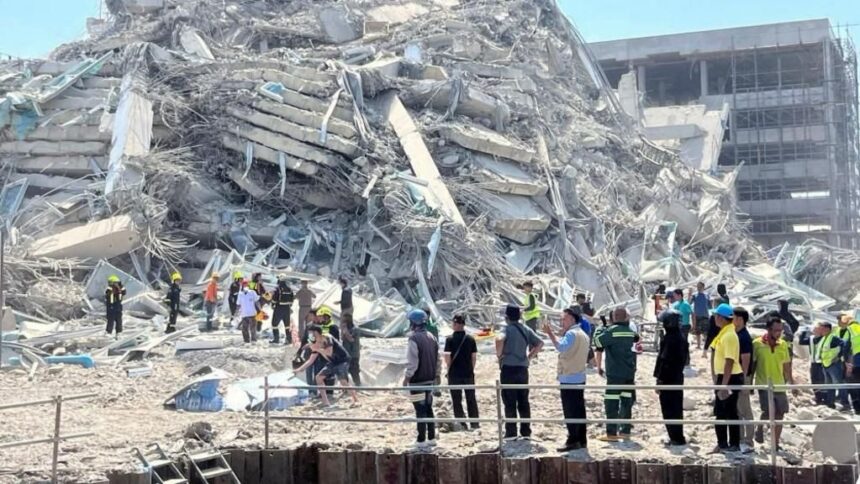A powerful 7.7 magnitude earthquake has struck central Myanmar, causing significant tremors that were felt hundreds of miles away in Bangkok, Thailand, and parts of Yunnan in south-west China.
The United States Geological Survey (USGS) reported that the epicenter was located 16 kilometers (10 miles) northwest of the city of Sagaing at a shallow depth of 10 kilometers.
Videos circulating on social media show damaged buildings and widespread panic in Bangkok as the strong tremors shook the city. In Myanmar’s capital, Naypyidaw, reports have emerged of roads buckling and infrastructure sustaining severe damage. Authorities are still assessing the full extent of the destruction, but the impact is already being described as catastrophic.
The earthquake struck at a time when Myanmar is already grappling with political instability following a military coup in 2021. The junta’s control over information and infrastructure has made it challenging to obtain reliable updates from the affected areas. Local communication networks have been disrupted, adding to the chaos and hampering rescue efforts.
Witnesses in Bangkok described feeling prolonged shaking, with some high-rise buildings evacuated as a precaution. Emergency services have been mobilized, and engineers are assessing the safety of critical structures. In Yunnan province, China, residents reported feeling the tremors but no immediate reports of damage have surfaced.
The quake’s proximity to Sagaing, a densely populated region, has raised fears of high casualties and extensive property damage. Humanitarian organizations have expressed concern about the ability to deliver aid effectively amid the ongoing political unrest.
International response teams and neighboring countries are closely monitoring the situation, but no official requests for assistance have yet been made. Relief agencies are preparing for the possibility of significant humanitarian needs, including medical aid and temporary shelter.
Myanmar’s political crisis has left the country vulnerable to disasters, with emergency preparedness and response capacities severely weakened. Local groups have called on the international community to step in, fearing that the junta’s restrictions could hinder timely relief efforts.

Seismologists have warned of potential aftershocks, advising residents to remain vigilant and stay away from damaged buildings. The USGS continues to monitor seismic activity in the region, cautioning that more tremors could follow.
This devastating earthquake adds yet another layer of crisis to a nation already engulfed in conflict and instability. As the scale of the damage becomes clearer, there is growing concern about the junta’s capacity and willingness to coordinate an effective response.
Authorities have urged residents to follow safety protocols and report any structural damage to local emergency services. In the meantime, the world watches anxiously as Myanmar faces yet another daunting challenge.








